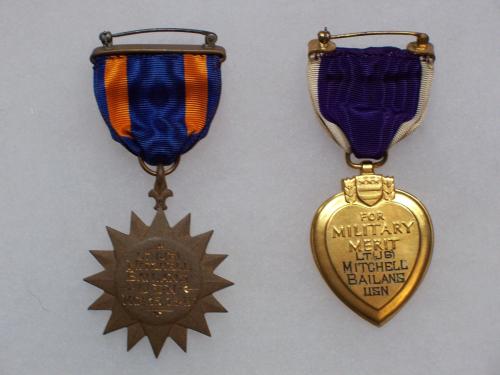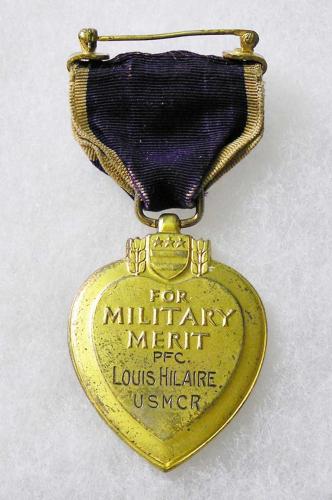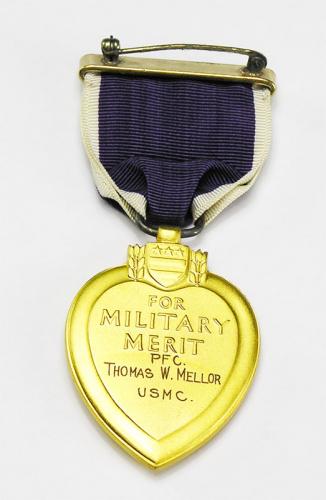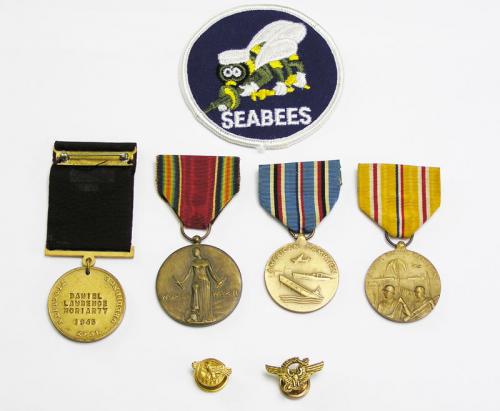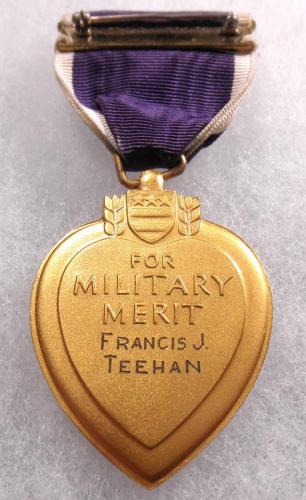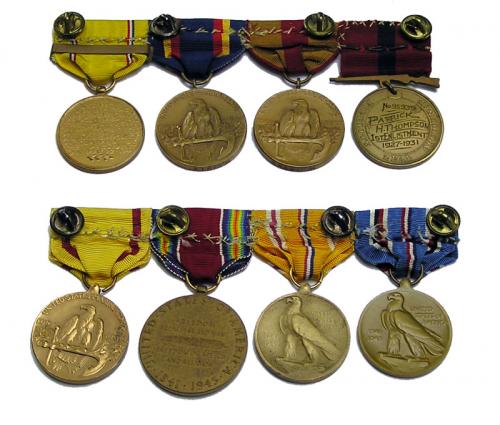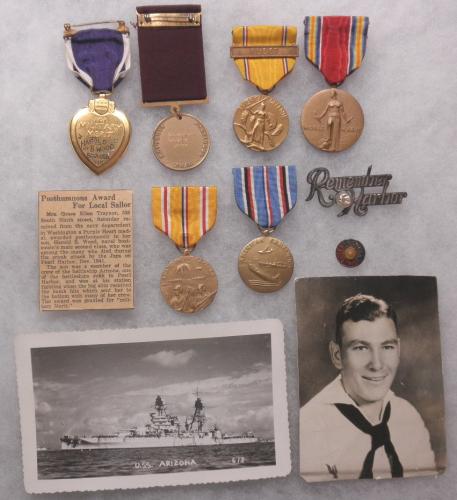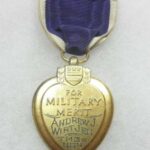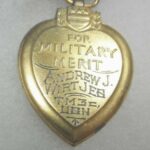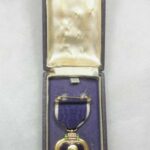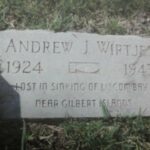Andrew John Wirtjes was born April 11, 1924 in Belle Plaine, Iowa to parents Frank J. and Martha Rose Wirtjes. Andrew was an only child. He enlisted in the Navy June 20, 1942 in Des Moines, and after training was assigned to CVE-56 on August 7, 1943, the ship's commissioning date. He enlisted just after his 18th birthday, which would have been just after his high school graduation.
In addition to being memorialized at the Honolulu Memorial, there is a Memorial grave stone in the Grand Junction (Iowa) Cemetery. This can be found on findagrave.com.
TM3c Wirtjes' group includes his officially engraved Type 1 posthumous sterling silver Purple Heart as made by the US Mint and its purple presentation box, plus internet research. Note that he was regular Navy, not reserves as many were at that time. (USN on Purple Heart)
USS Liscome Bay (CVE-56), a Casablanca Class carrier during World War, was the only ship of the United States Navy to be named for Liscome Bay in Dall Island in the Alexander Archipelago of Alaska. She was lost to a submarine attack during Operation Galvanic, with a catastrophic loss of life, on 24 November 1943.
Her keel was laid down on 9 December 1942 by the Kaiser Shipbuilding Company of Vancouver, Washington under a United States Maritime contract.
She was originally to have been given to the Royal Navy under the terms of Lend-Lease as HMS Ameer, but was appropriated by the U.S. Navy while still being built.
She was launched on 19 April 1943 sponsored by Mrs. Ben Moreell, wife of the Chief of the Navy's Bureau of Yards & Docks. She was named Liscome Bay on 28 June 1943 and assigned the hill classification symboll CVE-56 on 15 July 1943. She was acquired by the Navy and commissioned on 7 August 1943, Captain Irving D. Wiltsie in command.
Sinking
On 23 November, the Japanese submarine I-175 arrived off Makin. A temporary task group, built around Rear Admiral Henry R. Mullinex three escort carriers – Liscome Bay, Coral Sea and Corregidore – was steaming 20 miles southwest of Butaritari at 15 knots. At 04:30 on 24 November, reveille was sounded in Liscome Bay. The crew went to routine general quarters at 05:05, when flight crews prepared their planes for dawn launchings.
At about 05:10, a lookout shouted, "Here comes a torpedo!" The torpedo struck abaft the after engine room and detonated the aircraft bomb stockpile, causing a major explosion which engulfed the ship and sent shrapnel flying as far as 5,000 yards. "It didn't look like a ship at all", wrote Lieutenant John C. W. Dix, communications officer on Hoel, "We thought it was an ammunition dump… She just went whoom — an orange ball of flame."

At 05:33, Liscome Bay listed to starboard and then sank, carrying 53 officers and 591 enlisted men – including Admiral Mullinix, Captain Wiltsie, and famous Pearl Harbor hero Ship's Cook Third Class Doris Miller – down with her. Of the 916 crewmen, only 272 were rescued by Morris, Hughes and Hull. The survivors had reached the deck soon after the initial torpedo impact. The bombs in storage exploded minutes later, possibly due to a second torpedo.
Including the sailors lost on the Liscome Bay, American casualties in the assault on Makin Island exceeded the strength of the entire Japanese garrison.
